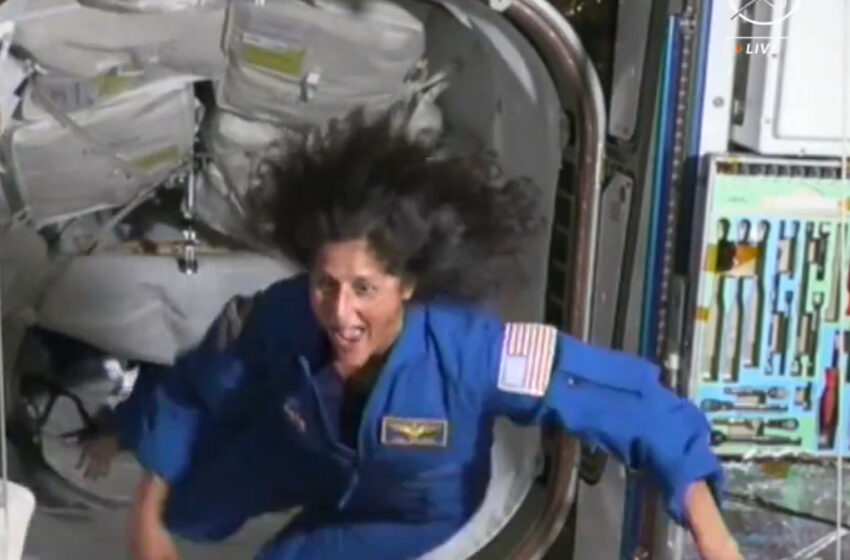Sunita Williams to vote in US presidential poll from space

Sunita Williams entered the International Space Station, along with flight commander Butch Wilmore, at 3:45 pm EDT Thursday. Photo credit: NASA
Indian American astronaut Sunita Williams, stranded at the International Space Station since June due to glitches in her Boeing Starliner spacecraft, is set to make history by voting in the Nov. 5 presidential election from space.
As she orbits about 250 miles above the Earth, Williams will join a select group of space-based voters, including David Wolf, the first American to vote from space in 1997 while aboard the Mir Space Station. and Kate Robbins, who cast her vote from the ISS in 2020.
The voting will be facilitated through NASA’s sophisticated Space Communications and Navigation (SCaN Program), to secure transmission of her vote.
READ: Sunita Williams dances into history at International Space Station (June 7, 2024)
Just like any other American away from home, Williams will fill out a Federal Post Card Application to request an absentee ballot. After she fills out an electronic ballot aboard the orbiting laboratory, the document will flow through NASA’s Tracking and Data Relay Satellite System to a ground antenna at the agency’s White Sands Test Facility in Las Cruces, New Mexico.
The network connects missions within 1.2 million miles of Earth with communications and navigation services – including the space station.
From New Mexico, NASA will transfer Williams’ ballot to the Mission Control Center at NASA Johnson and then on to the county clerk responsible for casting the ballot. To preserve the vote’s integrity, the ballot is encrypted and accessible only by the astronaut and the clerk.
But it will be another four months before Williams returns to Earth aboard the SpaceX Dragon capsule which arrived at the space station on a rescue mission last week.
READ: Sunita Williams third space mission delayed again (May 15, 2024)
Astronauts have voted in US elections since 1997 when the Texas Legislature passed a bill that allowed NASA astronauts to cast ballots from orbit.
Astronauts forego many of the comforts afforded to those back on Earth as they embark on their journeys to space for the benefit of humanity. Though they are far from home, NASA’s networks connect them with their friends and family and give them the opportunity to participate in democracy and society while in orbit.
For more than two decades, astronauts have continuously lived and worked aboard the space station, testing technologies, performing science, and developing skills needed to explore farther from Earth.
Astronauts aboard the orbiting laboratory stay connected with Earth and their civilian lives back home by communicating with mission control through the Near Space Network.
